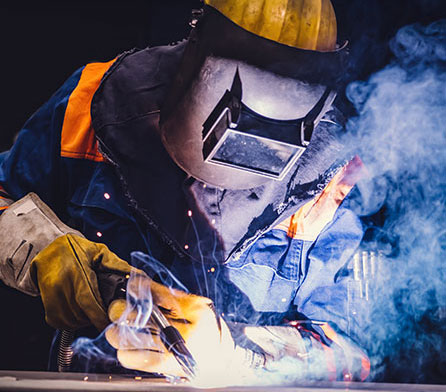Cryogenic Delivery Systems
Cryogenic Liquids
Liquid oxygen, liquid nitrogen and liquid argon are cryogenic liquids. Their boiling temperatures are:
- Liquid Oxygen -297.3°F (-183°C)
- Liquid Nitrogen -320.4°F (-195.8°C)
- Liquid Argon -302.6°F (-185.9°C)
Sublimation Point
- Liquid CO2 -109.3°F (-78.5°C)
To minimize heat transfer and sustain very low temperatures, the storage vessel must be specially designed. Storage vessels for liquid oxygen, liquid nitrogen and liquid argon are commercially available in various capacities from 350 to 13,000 U.S. gallons (1,325 to 49,210 liters) water capacity. The storage vessels may be either vertical, spherical, or horizontal depending on the site and consumption requirements.
Cryogenic liquids storage vessels have three basic components:
- Inner Pressure Vessel A vessel, usually made of stainless steel or other materials that have favorable strength characteristics when exposed to cryogenic temperatures.
- Outer Vessel A vessel made of carbon steel or stainless steel. Under normal operating conditions, this vessel retains the insulation around the inner pressure vessel, and can also maintain a vacuum around the inner vessel. Typically, the outer vessel is not exposed to cryogenic temperatures.
- Insulation The space between the inner and outer vessel, containing several inches of insulating material maintained in a vacuum. The vacuum and insulating material help to reduce heat transfer and thereby reduce the boil-off of the liquid oxygen, liquid nitrogen or liquid argon stored within the vessel.
The inner vessel of the storage tank is typically designed to sustain a maximum allowable working pressure of 250 psig (1724 kPa). Vessels may be fabricated for higher or lower working pressures and special applications. The service pressure of the vessel is adjustable.
Caution: Storage Facility Maintenance. Only authorized and trained personnel should maintain and operate the liquid oxygen, liquid nitrogen or liquid argon storage facility and its components. Safety concerns should be reported immediately.
General safety rules for liquid oxygen, liquid nitrogen and liquid argon.
- Do not store liquid oxygen, liquid nitrogen or liquid argon in confined spaces or poorly ventilated areas.
- Ensure that cryogenic liquids are handled only by persons instructed in the properties of the material and in the proper procedures for handling it.
- Ensure that all piping in which cryogenic liquids could be trapped between two valves and receptacles is equipped with pressure relief valves that are piped to properly designed vents.
- Do not smoke or create sparks near liquid oxygen equipment and tanks. Do not approach liquid oxygen tanks with an open flame.





























